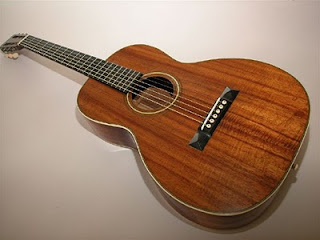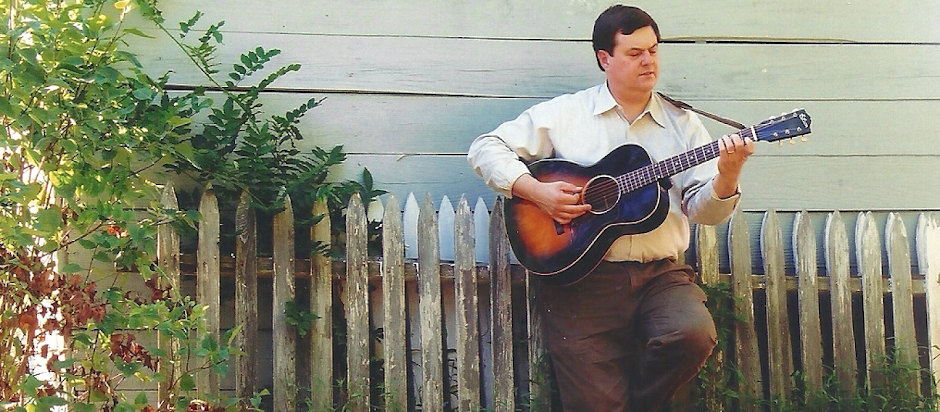No. 4 - Autumn 2007
New Luster For Vintage Guitars
Prices for vintage acoustic guitars rest on big demand and short supply
The demand for vintage acoustic guitars has grown in the last decade as Baby Boomers find old guitars make better investments than new guitars.
Acoustic guitars built between 1920 and 1950 by such American firms as Bacon and Day, Dobro, Gibson, Epiphone, Larson Brothers, Martin, National, Regal and Washburn are prized by collectors. Jazz guitars made from the 1930s to the 1950s by D'Angelico, Gretsch, Stromberg and other firms are highly collectible as well.
 |
| 1927 Martin 0-28K |
What factors affect vintage guitar sales? Despite limited supplies, demand for musical instruments with superior tone is strong. "Vintage guitars not only are good musical tools, they look cool," Levine says. "They have a tone that comes only with age. It is not a myth that sound improves over time." Many collectors also play instruments, Levine points out. "This includes professional and amateur musicians who buy an older instrument because they like the sound," he says.
Some 100 dealers sell vintage guitars, but perhaps only 20 have skilled repair people and knowledgeable sales staff. Still, the number of dealers, auctioneers and private sellers who operate websites or offer mail-order sales has increased. These new venues spread the word on the availability and condition of vintage guitars even as they raise sellers' price expectations.
Growing number of dealers
The vintage market is vigorous, and dealers may earn big margins. If a guitar is handled on consignment, a dealer may take 15 - 20 percent commission once an instrument sells. A collector who sells an instrument to a dealer for cash may lose more — 30 - 50 percent of the price quoted in classified ads, website listings or retailer's hang tags.
Auction houses take bigger bites — snagging fees from buyer and seller. In 2004, Boston-based Skinner auctioned two Lloyd Loar-signed F-5 mandolins at $105,000 and $94,000. It got a 17.5 percent premium on the first $80,000 and 10 percent on the balance from the buyer and the seller. At Sotheby's the same buyer would have paid 20 percent on the first $100,000 and 12 percent on the last $5,000.
Restorations affect values. People are surprised to hear a vintage guitar that needs repairs, neck reset or frets may be priced the same as one that doesn't need work. And shoddy repairs can lower value. "Work won't affect value if it's done correctly," Levine says. "Some repairs are needed. Still, a good repair is one no one can spot," Levine says.
Collectors include Baby Boomers who want the old sound or an instrument they couldn't afford in their youth. Even young musicians like old guitars for their sound and appearance. Some 90 percent of all guitar buyers are male.
"Players say they need different instruments for different songs" explains Levine, "and it's not uncommon for someone to own 10, 50, 150 guitars. People today have the means to own several guitars, like carpenters who have several tools."
Today's buyers are sellers tomorrow. "There'll always be people who decide they have too many guitars or whose life situations change," Levine says. "Certain collectors can't wait to get their hands on an old guitar that is new on the market, and they will even sell something to get it," he continues. "Or else their wives get wise to their guitar-buying habit or they run out of room to store them."
In recent years the vintage market has been stimulated by newly founded web sites without retail sites that simply list instruments. Many are run by people with as few as 20 vintage guitars who launch web sites of their own so they could go into business as vendors.
"This means dealers are trying to obtain a portion of the market for vintage-era guitars," Levine says. "It also means prices will continue to rise because collectors are always willing to pay premium rates for desirable instruments."
Vintage in the attic?
Do people find valuable old guitars in the attic? It happens, Levine says. His favorite attic find came to light 10 years ago, when a woman found a 1926 Martin 00-45 guitar. "She picked up a pair of identical 00-45 guitars at an estate sale for 50 cents each," he recalls. "She sold one because it had a crack in it, but I paid her $3,500 for the other. It sold it a few months later for $6,000. Now, it's worth even more."
In 1981 a Lark Street client brought in a 1928 National Tri-Cone guitar, a steel-bodied instrument. "A guy found it in his roommate's mother's garbage," Levine says. "It was worth $1,200 then. Now, it's worth more than $5,000."
_________________________________________________________
© 2007 Ken Lelen - All Rights Reserved

No comments:
Post a Comment